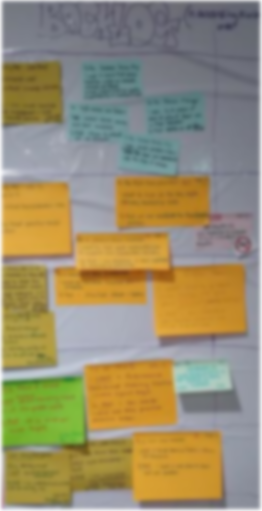Getting started with user stories
Think about the last time you bought something at a shop or online: Did you care what brand of vehicle delivered the goods? Probably not!
In the Cornwall Council IS team, our products exist to help people get things done and they, in turn, are helping other people get on with their lives. Often, as long as these people can do what they need, the details of how our products work do not matter very much to them.
User stories are a way of capturing the needs of our users and leaving out the rest of the details. They are very efficient, easy-to-use and have become the typical way for agile teams to define their products in the product backlog.
About agile in Cornwall Council
We are starting to adopt more agile ways of working. My role involves helping people develop their skills and apply agile techniques to improve the services we provide to the public. This series of posts is adapted from the articles I write for our internal teams. They cover some common agile terms and what it all really means.
Getting to the heart of users needs
Most of our teams have seen the default format for a user story by now[1]:
As a <type of person, role, group> I want <something> so that <some outcome>
The something is a part (potentially a tiny part) of our product. The sum total of these stories, and there could be thousands of them, defines our product. The collection of people, roles and groups define who we are intending to help, while the collection of outcomes captures what those people are trying to achieve.
This seems very simple but, as skilled professionals, do we need anything else to do our work?
Working with your user stories
As well as collecting stories in your product backlog[2] you can:
- Break them down into smaller sub-stories to help plan delivery
- Sort them into larger groups (often called features, epics or themes) to help manage priorities
- Annotate them with additional details (acceptance criteria are a common annotation)
Writing user stories gets quicker and easier with practice, and the stories in your backlog will get better through discussion amongst the team and your users[3]. If you find it difficult at first, don’t worry. You are not alone! To get started, just have a go and write something down and you can revisit and update your stories in later sprints[4].
When the going gets tough
Sometimes, you’ll know you need to get something into your backlog but just can’t find an easy way to get it into a user story format. That’s ok! Capture the idea so it doesn’t get lost and revisit it later. You might also want to ask the following questions:
- Who else wants the thing you have written? If it is just you, should we really spend time on it?
- Why do they want it? If there is no value, should we drop it?
If you can find the what, who and the why you probably have enough for a user story. If not, you probably shouldn’t be working on it.
An exercise
At the start, we talked about shopping and not caring about how your goods arrived. Perhaps you would care if they arrived in a poorly maintained, highly polluting, old diesel van. Can you capture that in a user story? Go on, have a go!
Footnotes
If you are brand new to this topic take a look at Mark Shead’s video on you tube. ↩︎
See the previous post for more about the product backlog. ↩︎
Some people would say that the written story is just a placeholder for a conversation. This is a really good way to think about it and fits with the agile approach of valuing individuals and interactions over processes and tools. ↩︎
The first post in this series covered what sprints are. ↩︎
Team Bumblee is a part-time Scrum team overseeing the agile transformation in the Cornwall Council IS department and we have written our stories on our physical scum board on a wall in New County Hall. ↩︎


